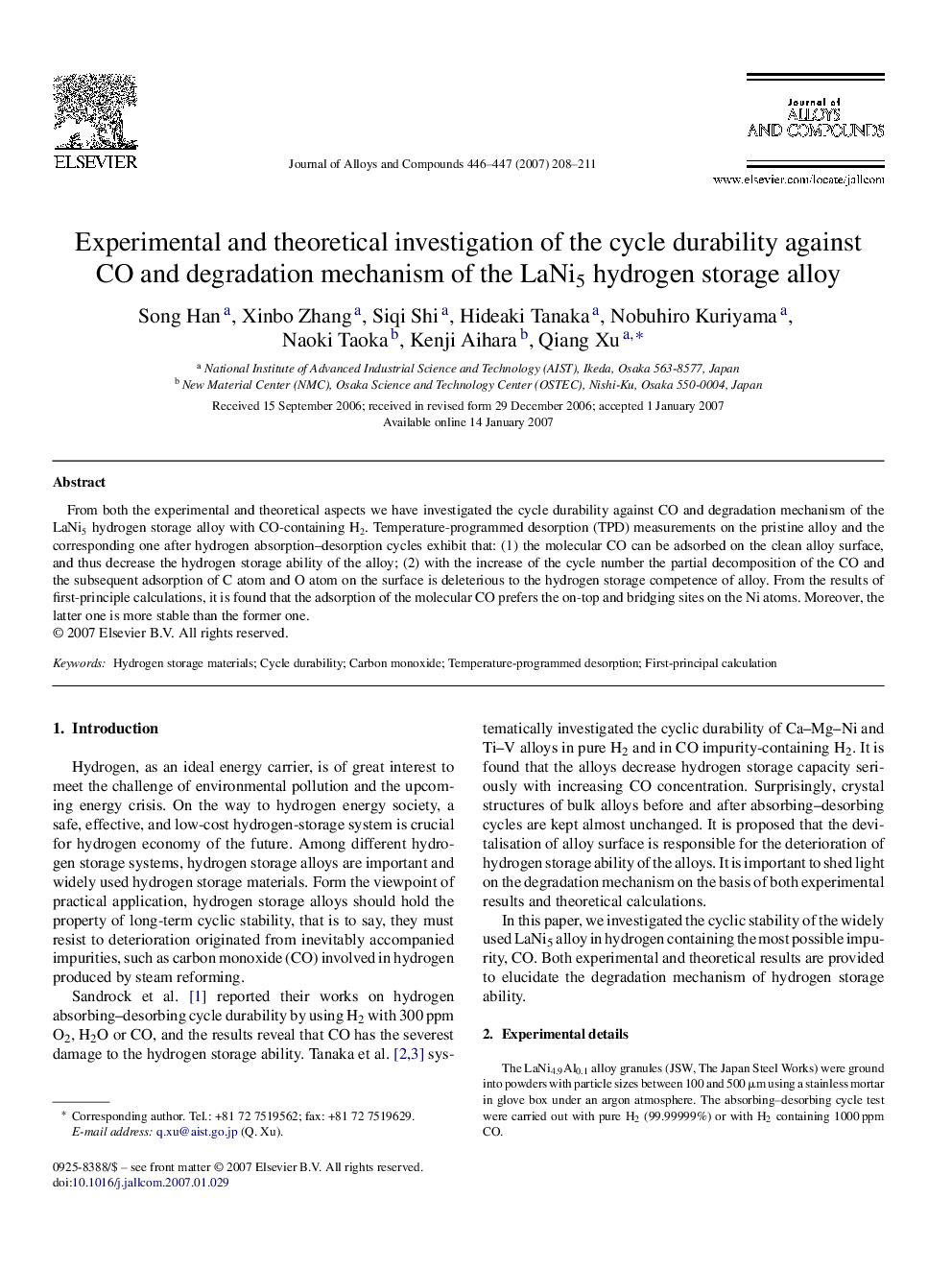| Article ID | Journal | Published Year | Pages | File Type |
|---|---|---|---|---|
| 1625932 | Journal of Alloys and Compounds | 2007 | 4 Pages |
From both the experimental and theoretical aspects we have investigated the cycle durability against CO and degradation mechanism of the LaNi5 hydrogen storage alloy with CO-containing H2. Temperature-programmed desorption (TPD) measurements on the pristine alloy and the corresponding one after hydrogen absorption–desorption cycles exhibit that: (1) the molecular CO can be adsorbed on the clean alloy surface, and thus decrease the hydrogen storage ability of the alloy; (2) with the increase of the cycle number the partial decomposition of the CO and the subsequent adsorption of C atom and O atom on the surface is deleterious to the hydrogen storage competence of alloy. From the results of first-principle calculations, it is found that the adsorption of the molecular CO prefers the on-top and bridging sites on the Ni atoms. Moreover, the latter one is more stable than the former one.
